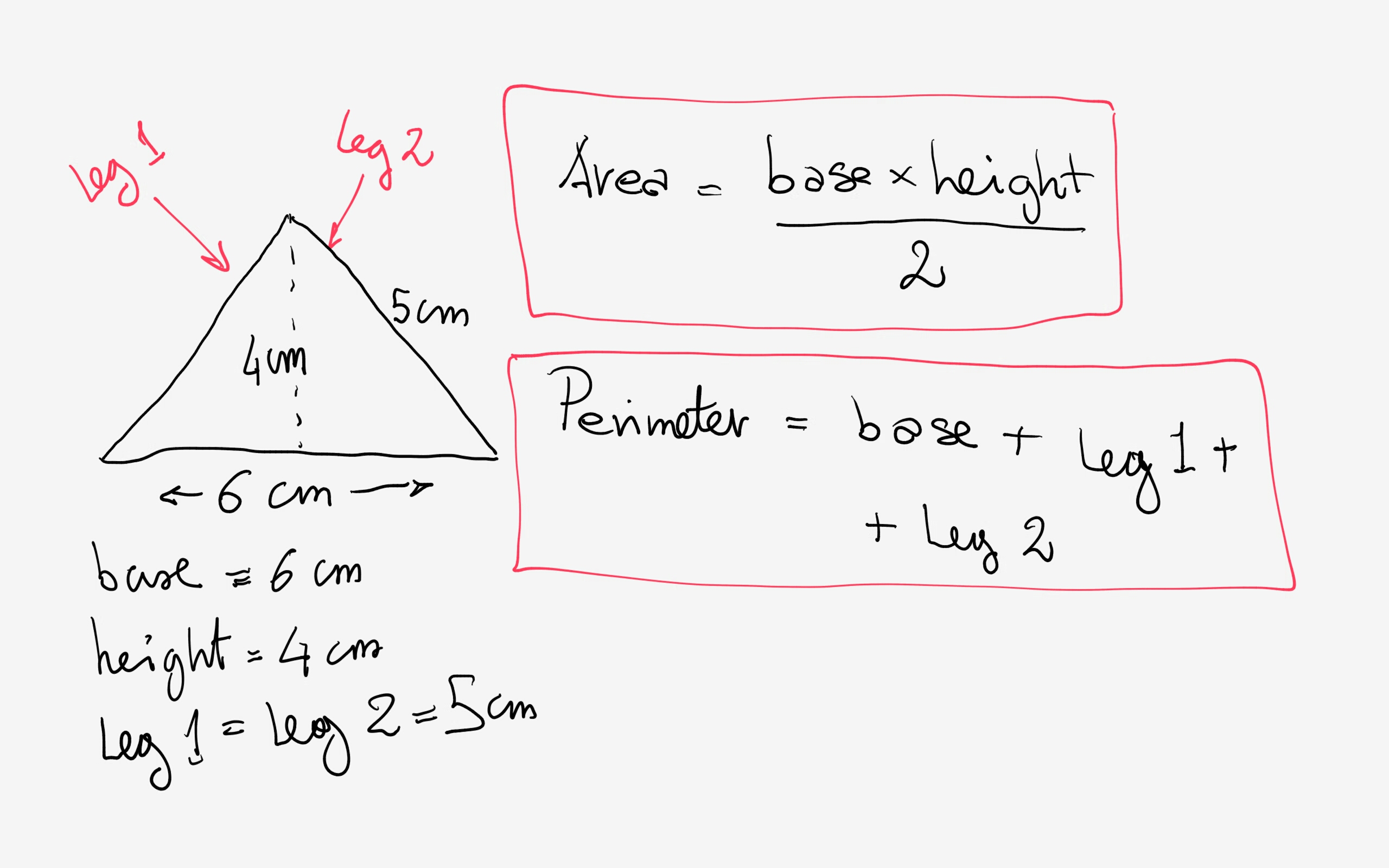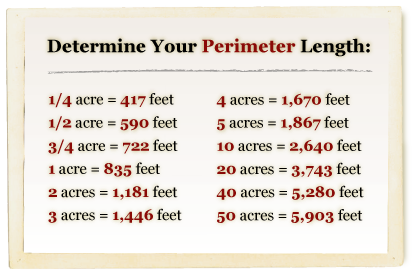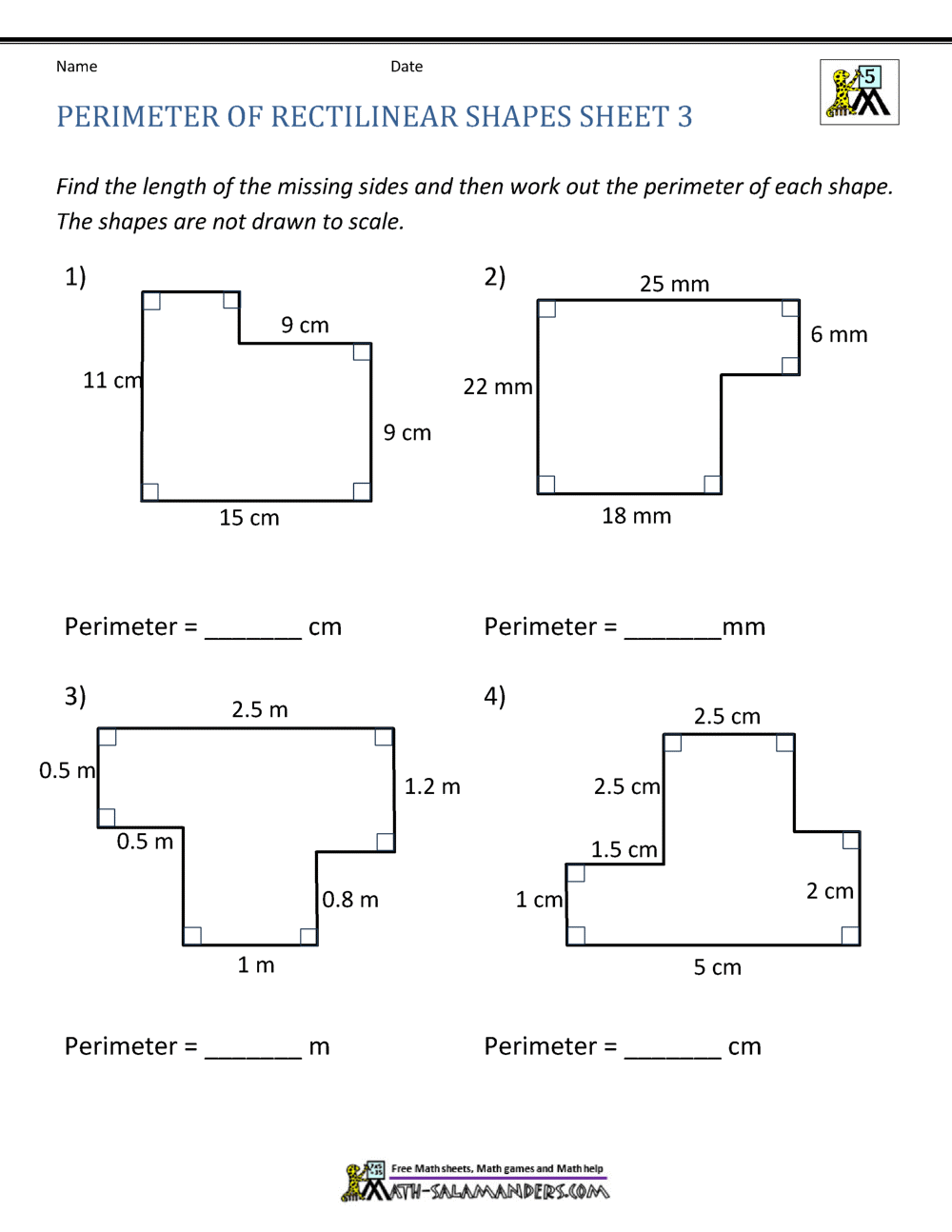Topic how do you find the perimeter of a figure: Understanding how to find the perimeter of a figure is essential in geometry. This guide will walk you through the steps and formulas needed to calculate the perimeter of various shapes, ensuring you have the knowledge to tackle any problem with confidence. Read on to explore examples, tips, and practical applications of perimeter calculations.
Table of Content
- How to Find the Perimeter of a Figure
- Introduction
- Definition of Perimeter
- Basic Perimeter Formulas
- Perimeter of Regular Shapes
- Perimeter of Irregular Shapes
- Step-by-Step Examples
- Perimeter of Specific Shapes
- Real-Life Applications of Perimeter
- Common Mistakes and Tips
- Practice Problems and Solutions
- Frequently Asked Questions (FAQs)
- YOUTUBE: Xem video này để tìm hiểu cách tính chu vi và diện tích của hình hợp thành, ví dụ về hình L, cùng với Thầy J.
How to Find the Perimeter of a Figure
The perimeter of a shape is the total length of its boundary. To find the perimeter, you add up the lengths of all the sides. Below are detailed methods to find the perimeter for various shapes along with examples.
Perimeter Formulas
- Triangle: \( P = a + b + c \) where \( a, b, c \) are the side lengths.
- Square: \( P = 4a \) where \( a \) is the side length.
- Rectangle: \( P = 2(l + w) \) where \( l \) is the length and \( w \) is the width.
- Parallelogram: \( P = 2(a + b) \) where \( a \) and \( b \) are the lengths of the parallel sides.
- Circle (Circumference): \( P = 2\pi r \) where \( r \) is the radius.
Examples
1. Perimeter of a Rectangle
To find the perimeter of a rectangle with lengths of 5 cm and 3 cm:
- Identify the length (\( l = 5 \) cm) and width (\( w = 3 \) cm).
- Apply the formula: \( P = 2(l + w) \).
- Calculate: \( P = 2(5 + 3) = 2 \times 8 = 16 \) cm.
Therefore, the perimeter of the rectangle is 16 cm.
2. Perimeter of a Triangle
To find the perimeter of a triangle with sides 3 cm, 4 cm, and 5 cm:
- Identify all side lengths (\( a = 3 \) cm, \( b = 4 \) cm, \( c = 5 \) cm).
- Apply the formula: \( P = a + b + c \).
- Calculate: \( P = 3 + 4 + 5 = 12 \) cm.
Therefore, the perimeter of the triangle is 12 cm.
3. Perimeter of a Parallelogram
To find the perimeter of a parallelogram with sides 6 cm and 4 cm:
- Identify the lengths of the parallel sides (\( a = 6 \) cm, \( b = 4 \) cm).
- Apply the formula: \( P = 2(a + b) \).
- Calculate: \( P = 2(6 + 4) = 2 \times 10 = 20 \) cm.
Therefore, the perimeter of the parallelogram is 20 cm.
Teaching Tips
- Use a mixture of regular and irregular shapes for practice.
- Look for patterns in shapes to simplify calculations.
- Ensure students understand the difference between perimeter and area.
- Convert all measurements to the same unit before calculating.
Common Mistakes
- Adding sides in the wrong order (order doesn't matter).
- Confusing perimeter with area.
- Using incorrect units (ensure all sides are in the same unit).
Practice Questions
Calculate the perimeter of the following shapes:
- A rectangle with sides 10 cm and 5 cm.
- A triangle with sides 7 cm, 8 cm, and 9 cm.
- A square with a side length of 4 cm.

READ MORE:
Introduction
Finding the perimeter of a figure is an essential skill in geometry, crucial for various real-life applications. The perimeter is defined as the total distance around the boundary of a two-dimensional shape. This guide will walk you through the steps to calculate the perimeter of different shapes, whether regular or irregular, using simple formulas and examples.
To calculate the perimeter, follow these general steps:
- Identify the Shape: Determine the type of shape you are dealing with (e.g., triangle, rectangle, square, circle, polygon).
- Measure All Sides: Measure the lengths of all sides of the shape.
- Apply the Formula: Use the appropriate formula for the shape to calculate the perimeter. For instance:
- Rectangle: \( P = 2(l + w) \)
- Square: \( P = 4a \)
- Triangle: \( P = a + b + c \)
- Circle (Circumference): \( P = 2\pi r \)
- Polygon: Sum of all sides
- Sum the Sides: Add the lengths of all the sides to get the perimeter.
- Use Correct Units: Ensure the perimeter is expressed in the correct units (e.g., cm, m, inches).
By following these steps, you can accurately determine the perimeter of any figure, making it easier to solve geometric problems and apply these calculations in practical scenarios like fencing a yard, framing a picture, or designing a garden layout.
Definition of Perimeter
The perimeter of a figure is the total length of its boundary. In geometry, the perimeter is calculated by summing the lengths of all sides of a two-dimensional shape. The perimeter is measured in linear units such as centimeters, meters, inches, or feet.
Here is a detailed explanation of how to calculate the perimeter for different shapes:
- Square: The perimeter of a square is given by \( P = 4a \), where \( a \) is the length of one side.
- Rectangle: The perimeter of a rectangle is calculated using the formula \( P = 2(l + w) \), where \( l \) is the length and \( w \) is the width.
- Triangle: For a triangle, the perimeter is the sum of the lengths of its sides: \( P = a + b + c \), where \( a \), \( b \), and \( c \) are the side lengths.
- Circle (Circumference): The perimeter of a circle, known as the circumference, is given by \( C = 2\pi r \), where \( r \) is the radius of the circle.
- Polygon: The perimeter of a polygon is the sum of the lengths of all its sides. For a regular polygon, it is calculated as \( P = n \times a \), where \( n \) is the number of sides and \( a \) is the length of one side.
- Parallelogram: The perimeter of a parallelogram is calculated by \( P = 2(a + b) \), where \( a \) and \( b \) are the lengths of the adjacent sides.
- Ellipse: The perimeter of an ellipse is more complex and often approximated using Ramanujan's formula: \( P \approx \pi [ 3(a + b) - \sqrt{(3a + b)(a + 3b)}] \), where \( a \) and \( b \) are the lengths of the semi-major and semi-minor axes.
These formulas help in determining the perimeter for both regular and irregular shapes. Knowing how to calculate the perimeter is useful in various real-life applications, such as determining the length of fencing required for a garden or the amount of trim needed for a room.
Basic Perimeter Formulas
Calculating the perimeter of a shape involves summing the lengths of all its sides. Below are the formulas for finding the perimeter of various common shapes:
- Square: The perimeter \( P \) of a square is given by: \[ P = 4a \] where \( a \) is the length of one side.
- Rectangle: The perimeter \( P \) of a rectangle is calculated using: \[ P = 2(l + w) \] where \( l \) is the length and \( w \) is the width.
- Triangle: For a triangle, the perimeter \( P \) is the sum of the lengths of its sides: \[ P = a + b + c \] where \( a \), \( b \), and \( c \) are the side lengths.
- Circle (Circumference): The perimeter of a circle, known as the circumference \( C \), is given by: \[ C = 2\pi r \] where \( r \) is the radius of the circle.
- Polygon: The perimeter \( P \) of a polygon is the sum of the lengths of all its sides. For a regular polygon with \( n \) sides of equal length \( a \), it is calculated as: \[ P = n \times a \]
- Parallelogram: The perimeter \( P \) of a parallelogram is given by: \[ P = 2(a + b) \] where \( a \) and \( b \) are the lengths of the adjacent sides.
- Ellipse: The perimeter of an ellipse is more complex and often approximated using Ramanujan's formula: \[ P \approx \pi [ 3(a + b) - \sqrt{(3a + b)(a + 3b)}] \] where \( a \) and \( b \) are the lengths of the semi-major and semi-minor axes.
These formulas are essential for determining the perimeter of various shapes in both academic exercises and real-life applications, such as measuring the boundary of a plot of land or determining the amount of material needed to frame a picture.
Perimeter of Regular Shapes
Calculating the perimeter of regular shapes involves simple formulas based on the uniformity of their sides. Here are detailed steps and formulas for finding the perimeter of common regular shapes:
- Square:
The perimeter \( P \) of a square is calculated by multiplying the length of one side by 4:
\[ P = 4a \]where \( a \) is the length of a side.
- Rectangle:
The perimeter \( P \) of a rectangle is found by adding the lengths of all four sides, or by using the formula:
\[ P = 2(l + w) \]where \( l \) is the length and \( w \) is the width.
- Triangle:
For a triangle, the perimeter \( P \) is the sum of the lengths of its three sides:
\[ P = a + b + c \]where \( a \), \( b \), and \( c \) are the lengths of the sides.
- Equilateral Triangle:
An equilateral triangle has all three sides of equal length, so the perimeter \( P \) can be calculated as:
\[ P = 3a \]where \( a \) is the length of one side.
- Regular Pentagon:
The perimeter \( P \) of a regular pentagon (five equal sides) is calculated by multiplying the length of one side by 5:
\[ P = 5a \]where \( a \) is the length of a side.
- Regular Hexagon:
The perimeter \( P \) of a regular hexagon (six equal sides) is found by multiplying the length of one side by 6:
\[ P = 6a \]where \( a \) is the length of a side.
- Circle (Circumference):
The perimeter of a circle, called the circumference \( C \), is calculated using the radius \( r \) as follows:
\[ C = 2\pi r \]
By understanding and using these formulas, you can easily calculate the perimeter of any regular shape, ensuring accuracy in both academic and real-world applications.

Perimeter of Irregular Shapes
Calculating the perimeter of irregular shapes involves summing the lengths of all their sides, which may vary in length. Here are the steps and methods to find the perimeter of various irregular shapes:
- Identify All Sides:
First, measure the lengths of all sides of the irregular shape. Ensure that all measurements are in the same unit.
- Add the Lengths:
Sum the lengths of all sides to determine the perimeter \( P \). The formula is:
\[ P = a_1 + a_2 + a_3 + \ldots + a_n \]where \( a_1, a_2, a_3, \ldots, a_n \) are the lengths of the sides.
Here are some examples to illustrate the process:
Example 1: Irregular Quadrilateral
Consider an irregular quadrilateral with side lengths 3 cm, 4 cm, 5 cm, and 6 cm. To find the perimeter:
- Sum the side lengths: \[ P = 3 \, \text{cm} + 4 \, \text{cm} + 5 \, \text{cm} + 6 \, \text{cm} = 18 \, \text{cm} \]
- The perimeter of the quadrilateral is 18 cm.
Example 2: Irregular Pentagon
For an irregular pentagon with side lengths 2 cm, 3 cm, 4 cm, 5 cm, and 6 cm:
- Sum the side lengths: \[ P = 2 \, \text{cm} + 3 \, \text{cm} + 4 \, \text{cm} + 5 \, \text{cm} + 6 \, \text{cm} = 20 \, \text{cm} \]
- The perimeter of the pentagon is 20 cm.
Example 3: Complex Irregular Shape
For a more complex shape with sides measuring 4.2 m, 3.1 m, 5.6 m, 2.4 m, and 3.7 m:
- Sum the side lengths: \[ P = 4.2 \, \text{m} + 3.1 \, \text{m} + 5.6 \, \text{m} + 2.4 \, \text{m} + 3.7 \, \text{m} = 19 \, \text{m} \]
- The perimeter of the complex shape is 19 m.
By following these steps, you can accurately determine the perimeter of any irregular shape, ensuring you have the necessary measurements for practical applications like landscaping, construction, or crafting.
Step-by-Step Examples
Understanding how to find the perimeter of various shapes can be made simpler with step-by-step examples. Below are detailed examples for different shapes:
Example 1: Perimeter of a Rectangle
- Identify the Shape:
We are given a rectangle with lengths of 4.7 mm and 8.1 mm.
- Identify All Side Lengths:
A rectangle has opposite sides equal. So, the sides are: 4.7 mm, 4.7 mm, 8.1 mm, and 8.1 mm.
- Add the Side Lengths:
Sum the lengths: \( 4.7 + 4.7 + 8.1 + 8.1 = 25.6 \) mm.
- Write the Final Answer:
The perimeter of the rectangle is 25.6 mm.
Example 2: Perimeter of a Triangle
- Identify the Shape:
We have a triangle with side lengths of 30, 64, and 68 units.
- Identify All Side Lengths:
The sides are already given as 30, 64, and 68 units.
- Add the Side Lengths:
Sum the lengths: \( 30 + 64 + 68 = 162 \) units.
- Write the Final Answer:
The perimeter of the triangle is 162 units.
Example 3: Perimeter of a Parallelogram
- Identify the Shape:
We have a parallelogram with side lengths of 6 cm and 4 cm.
- Identify All Side Lengths:
A parallelogram has opposite sides equal. So, the sides are: 6 cm, 6 cm, 4 cm, and 4 cm.
- Add the Side Lengths:
Sum the lengths: \( 6 + 6 + 4 + 4 = 20 \) cm.
- Write the Final Answer:
The perimeter of the parallelogram is 20 cm.
Example 4: Perimeter of a Trapezoid
- Identify the Shape:
We have a trapezoid with side lengths of 8 cm, 5 cm, 6 cm, and 5 cm.
- Identify All Side Lengths:
The sides are given as 8 cm, 5 cm, 6 cm, and 5 cm.
- Add the Side Lengths:
Sum the lengths: \( 8 + 5 + 6 + 5 = 24 \) cm.
- Write the Final Answer:
The perimeter of the trapezoid is 24 cm.
Example 5: Perimeter of a Complex Irregular Shape
- Identify the Shape:
We have a complex polygon with side lengths of 4.2 m, 3.1 m, 5.6 m, 2.4 m, and 3.7 m.
- Identify All Side Lengths:
The sides are given as 4.2 m, 3.1 m, 5.6 m, 2.4 m, and 3.7 m.
- Add the Side Lengths:
Sum the lengths: \( 4.2 + 3.1 + 5.6 + 2.4 + 3.7 = 19 \) m.
- Write the Final Answer:
The perimeter of the complex shape is 19 m.
By following these step-by-step examples, you can accurately calculate the perimeter of various shapes, ensuring precise measurements for practical applications.
Perimeter of Specific Shapes
- Rectangle: To find the perimeter of a rectangle, you add the lengths of all four sides. If the length of one pair of opposite sides is represented by \( l \) and the length of the other pair is represented by \( w \), then the perimeter \( P \) can be calculated using the formula \( P = 2l + 2w \).
- Square: Since all four sides of a square are equal, you can find the perimeter by multiplying the length of one side (\( s \)) by 4, so \( P = 4s \).
- Triangle: The perimeter of a triangle is the sum of the lengths of its three sides. If the lengths of the sides are represented by \( a \), \( b \), and \( c \), then \( P = a + b + c \).
- Circle (Circumference): The perimeter of a circle, also known as its circumference, can be found using the formula \( P = 2\pi r \), where \( \pi \) is a constant approximately equal to 3.14159, and \( r \) is the radius of the circle.
- Parallelogram: Similar to a rectangle, you add the lengths of all four sides to find the perimeter of a parallelogram. If the lengths of the adjacent sides are represented by \( a \) and \( b \), then \( P = 2a + 2b \).
- Polygon: For a polygon with \( n \) sides, the perimeter is the sum of the lengths of all the sides. You can find the perimeter by adding together the lengths of each side, which may require different methods depending on the specific polygon.
Real-Life Applications of Perimeter
Understanding how to calculate the perimeter of various shapes has numerous real-life applications across different fields. Here are some examples:
- Construction: Architects and construction workers use perimeter calculations extensively to determine the amount of material needed for fencing, laying foundations, or framing structures.
- Landscaping: Landscapers rely on perimeter measurements to design and install borders, walkways, and garden beds.
- Property Management: Real estate agents and property managers use perimeter measurements to assess the size and value of properties for sale or rent.
- Urban Planning: City planners use perimeter calculations to design roadways, parks, and recreational areas within urban landscapes.
- Sports: Perimeter measurements are crucial in sports such as basketball, soccer, and football for marking out playing fields and determining boundary lines.
- Art and Design: Artists and designers use perimeter calculations to create geometric patterns, sculptures, and architectural drawings.
- Science and Engineering: Perimeter calculations are essential in fields like physics, biology, and engineering for analyzing shapes, designing experiments, and building structures.

Common Mistakes and Tips
- Ignoring Units: Forgetting to include units (such as inches, feet, meters) in your perimeter calculation can lead to inaccuracies, especially in real-world applications where precision matters.
- Miscounting Sides: One common mistake is miscounting the number of sides or double-counting shared sides, which can result in an incorrect perimeter calculation.
- Incorrect Formula Usage: Using the wrong formula for a particular shape can lead to errors. Make sure to use the appropriate formula for each shape, whether it's a rectangle, triangle, circle, or polygon.
- Not Considering Symmetry: In some cases, shapes may have symmetry that allows you to simplify perimeter calculations. Take advantage of symmetry when applicable to make calculations easier.
- Estimation Errors: Relying too heavily on estimation instead of precise measurements can introduce errors, especially in situations where accuracy is crucial.
- Skipping Units Conversion: If measurements are in different units, it's essential to convert them to the same unit before calculating perimeter to ensure consistency.
- Not Checking Work: Always double-check your calculations to catch any mistakes before finalizing your answer, especially in complex or multi-step problems.
Practice Problems and Solutions
Practice solving these perimeter problems to sharpen your skills:
- Rectangle: Find the perimeter of a rectangle with length 6 cm and width 4 cm.
- Square: Determine the perimeter of a square with sides measuring 9 meters each.
- Triangle: Calculate the perimeter of a triangle with side lengths of 5 cm, 12 cm, and 8 cm.
- Circle: Find the perimeter of a circle with a radius of 10 inches.
- Parallelogram: Determine the perimeter of a parallelogram with adjacent sides measuring 7 cm and 12 cm.
- Polygon: Calculate the perimeter of a regular hexagon with each side measuring 6 meters.
Here are the solutions:
- Rectangle: \( P = 2(6) + 2(4) = 12 + 8 = 20 \) cm.
- Square: \( P = 4(9) = 36 \) meters.
- Triangle: \( P = 5 + 12 + 8 = 25 \) cm.
- Circle: \( P = 2\pi(10) \approx 62.83 \) inches.
- Parallelogram: \( P = 2(7) + 2(12) = 14 + 24 = 38 \) cm.
- Polygon: Since a regular hexagon has six equal sides, its perimeter is \( 6 \times 6 = 36 \) meters.
Frequently Asked Questions (FAQs)
- What is the Perimeter?
The perimeter of a figure is the total length of its boundary. It is the sum of all the lengths of the sides of the figure.
- How to Find the Perimeter?
To find the perimeter of a figure, add together the lengths of all its sides. The method of calculation may vary depending on the shape of the figure.
- Perimeter Formulas for Different Shapes?
There are specific formulas for calculating the perimeter of different shapes. For example, the perimeter of a rectangle is \( P = 2l + 2w \), where \( l \) is the length and \( w \) is the width.
- Real-Life Uses of Perimeter?
The concept of perimeter has various applications in real life, such as in construction, landscaping, property management, sports, and urban planning.
- Tips for Calculating Perimeter Accurately?
Some tips for accurate perimeter calculations include ensuring units are consistent, using the correct formula for each shape, considering symmetry, and double-checking your work for errors.
Xem video này để tìm hiểu cách tính chu vi và diện tích của hình hợp thành, ví dụ về hình L, cùng với Thầy J.
Tìm Chu vi và Diện tích của Hình hợp thành | Ví dụ hình L | Hình học | Toán với Thầy J
READ MORE:
Xem video này để tìm hiểu cách tính chu vi của các hình học cơ bản, cùng với Thầy J.
Cách Tìm Chu vi | Toán với Thầy J
















